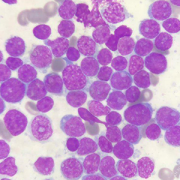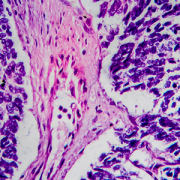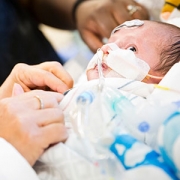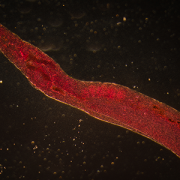New approach to maintenance chemotherapy may improve children’s quality of life
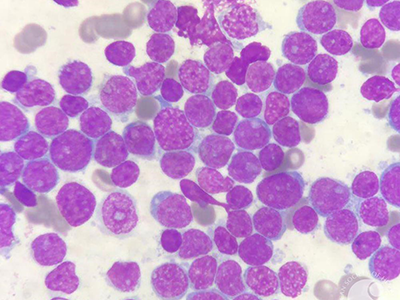
Marrow replaced with acute lymphoblastic leukemia.
According to a study that accrued over 9,000 patients, a new approach to maintenance therapy lessens the burden of treatment and potential toxicity in children experiencing the most common cancer — B-acute lymphoblastic leukemia (B-ALL). The average-risk (AR) B-ALL subset of patients demonstrated an overall five-year survival rate of 98% despite less frequent chemotherapy pulses. Researchers from Children’s National Hospital led the 10-year study published on Jan. 7, 2021, in the Journal of Clinical Oncology.
This phase III clinical trial, which opened at over 200 centers, helped inform an alternative maintenance therapy with less frequent administration of vincristine and dexamethasone. These standard drugs are part of a multiagent treatment approach used to treat acute lymphoblastic leukemia (ALL).
“For decades, the common maintenance therapy approach [within the Children’s Oncology Group] was administering vincristine or steroid pulses every four weeks. The steroids can trigger disruptive behaviors like moodiness, sleep disturbance, food cravings, poor school attendance or physical aggression and vincristine can cause declines in fine motor and sensory-perceptual performance,” said Anne Angiolillo, M.D., lead author of the study and director of the Leukemia and Lymphoma Program at Children’s National. “We can now lessen the burden of this therapy while still maintaining excellent outcomes, which is a huge benefit to our patients and their families.”
The findings suggest that the decreased frequency of both vincristine and dexamethasone pulses every four weeks to every 12 weeks alleviates the therapy burden and reduces toxicity, potentially improving children’s quality of life.
Simultaneously, the researchers tried increasing the starting dose of oral methotrexate, a standard chemotherapy drug, given once weekly in the maintenance phase to see if it would improve the five-year disease-free survival rate, but, according to the data, it did not improve outcomes.
The world’s largest organization devoted exclusively to pediatric cancer research, the Children’s Oncology Group (COG), adopted the approach of less frequent pulses into the frontlines of their new B-ALL trials, given the study’s findings, to help decrease the therapy burden for patients and their families.
“I am very excited that the results of AALL0932 [the clinical trial] will have a major effect on the schedule of maintenance therapy for children with standard and high-risk B acute lymphoblastic leukemia in all future COG therapeutic trials,” said Dr. Angiolillo.
Dr. Angiolillo, and co-author Reuven Schore, M.D., pediatric oncologist at Children’s National were the chair and vice-chair of the clinical trial, respectively. Dr. Schore is also a member of the Leukemia and Lymphoma Program at Children’s National.
ALL can progress quickly, affect the bone marrow and the blood, including B cells and T cells. Among the children with ALL, approximately 55% comprise of the newly diagnosed National Cancer Institute (NCI) standard-risk (SR) B-ALL.
The study enrolled 9,229 patients with B-ALL between August 2010 and March 2018. Only 2,364 patients classified as average-risk received a random assignment to one of the four maintenance arms at the start of maintenance therapy. The researchers administered either vincristine/dexamethasone pulses every 12 weeks or every four weeks and a starting dose of once-weekly oral methotrexate of 20 mg/m2 or 40 mg/m2 during the maintenance phase.
“This trial establishes that with improved risk stratification utilizing blast cytogenetics and rate of response, a relatively low-intensity premaintenance backbone with a three-drug induction, and lower exposure to chemotherapy in maintenance, results in outstanding outcomes,” said Angiolillo et al.


